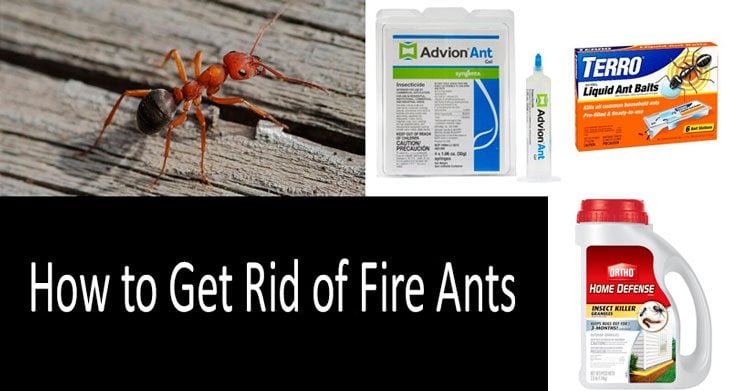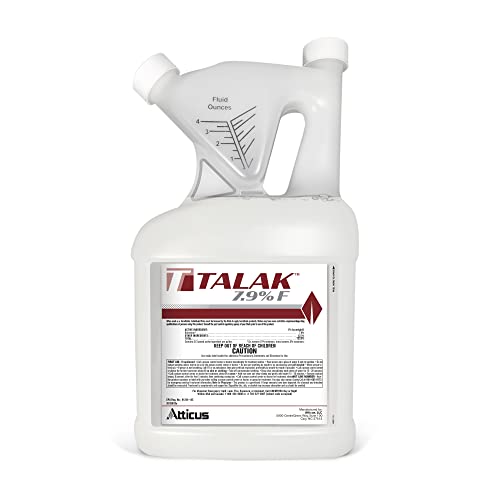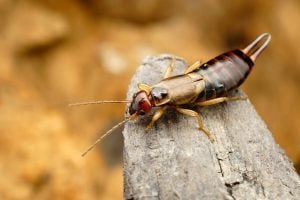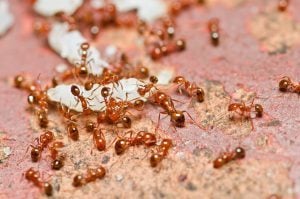Are you worried about how to get rid of fire ants? Here you will find out which methods are effective and which ones aren’t, we’ll bust some myths about traditional treatment and will nominate 7 fast and highly effective fire ant control products. Get ready, as this article is packed! In order to understand all of the aspects and do the best job, we found out what the entomologists from the top US Universities think about fire ant control.
They spread as fast as fire. Their name though is related not to their speed, but to the effect of their sting which, according to the Schmidt sting pain index, is considered to be as painful as exposure to an open flame. They can be very dangerous so don’t hesitate practice caution.
The scientists agree that fire ants are very difficult to eliminate completely, but are quite easily manageable. It is the combination of chemical and non-chemical (i.e. timely disposal of the food and keeping the house and the garden clean) and treatment that helps to get rid of the ants in the places where they are most dangerous and to reduce the invasion to a bearable level everywhere else.
How to Get Rid of Fire Ants:
Which Fire Ant Control Products Are Recommended By The Scientists As The Most Effective Ones?
Let’s give a brief review of what the scientists advise us for getting rid of fire ants.
- Slow acting baits are highly effective, but take a long time to act. They are effective because they contaminating the entire colony of ants, including the queen which is the main and only ant-maker. Their drawback is that they take long to work and it can take up to several weeks for the ants to spread the bait among them and kill the entire colony. Patience will be rewarded, as this method can eliminate the entire colony if enough of the insecticide is shared with the colony.
- Fast ant killers are liquid insecticides, dusts and granules. They are fast and less effective. The main advantage is that the synthetic chemicals which such products contain kill the ants quickly enough. The downside is that this is not effective in the long run as the ants die one by one and will not contaminate the queen with the insecticide. She remains deep in the nest and keeps on breeding new ants.
Fire Ant Control Products: Active Ingredients
The scientists distinguish two types of fire ants chemical killing: treatment of the mound and treatment of the surrounding territory, including your house in case the ants managed to get inside.
The experts advise treating the mound with liquid insecticide products, as according to them, they are extremely effective when it’s hot and dry. They can be poured into the mound with the help of a special tube or straight inside. Such methods are effective enough, but they won’t help you kill the queen and thus destroy the entire colony.
Treating the territory surrounding the mound implies spraying liquid insecticides and spreading insecticide granules, dusts & poison gel bait.
To understand the operation of the above mentioned product types, you also need to be aware of how certain synthetic chemicals affect fire ants:
- Indoxacarb is a contact poison which is permitted for household use, but “for only urban areas or non-food producting lands” as it is toxic. It is a typical active ingredient of fire ant gel bait.
- Pyrethroids incluing bifenthrin, cypermethrin, deltamethrin are also used against ants. According to the Texas Imported Fire Ant Research and Management Project scientists, pyrethroids should be “Used as directed to suppress foragers, but they may not kill the colony. Multiple applications may be necessary. Uses lot of insecticide so that the populations of other beneficial insects may be affected”. Insecticide dusts, granules and liquid insecticides are based on pyrethroids. This is a rare chemical which can be used indoors as well.
- Fipronil is less toxic than indoxacarb. It is a strong contact poison with long residual action. It is known to also be effective against the pyrethroid-resistant insects. Liquid insecticidal concentrates and gel bait usually contain fipronil.
- Borax (or boric acid) is one of the few organic insecticides able to kill fire ants.
Getting Rid of Fire Ants for Sure: Two Best Fire Ant Gel and Liquid Baits
Gel and liquid baits are considered to be the most effective means of getting rid of fire ants as the insects do not merely die after having come into contact with the insecticide, but they also spread the poison in the mound as they share the bait with each other and, most importantly, the queen. The only thing that you have to bear in mind is that there will be no instant effect, and the ants will be dying slowly. The scientists recommend being alert when using fire ants like that and placing the bait around the mound in the evening, when the temperature is in the range of 70-90° F. Also remember to renew the bait regularly.
There are two best sellers and most popular baits, one of them is slow-acting Terro borax-based, 5,4% product, the other is quick-acting Advion indoxacarb-based, 0.05% product.
 This bait is #1 Best Seller among Pest Control Traps. This is plastic semitransparent bait with liquid filling for indoor. The active ingredient is borax. The manufacturer claims that Terro trap exterminates all kinds of home ants, including fire ants. The patented design of the device prevents the bait from leaking, and neither pets nor people can accidentally contact it.
This bait is #1 Best Seller among Pest Control Traps. This is plastic semitransparent bait with liquid filling for indoor. The active ingredient is borax. The manufacturer claims that Terro trap exterminates all kinds of home ants, including fire ants. The patented design of the device prevents the bait from leaking, and neither pets nor people can accidentally contact it.
How does this bait work? You have to place several plastic plates near the places where there are lots of ants, or ant trails. As a rule, the insects have 1 or 2 most used routes around the house, where you can lure them. Fire ants will crawl into the trap, drink the bait and return to their nest where they will contaminate dozens of other ants. Moreover, with the help of this pheromone trail, the ant will let others know about the sweet treat, which means they will also head to the trap. That should last until the colony is completely exterminated, since the poison will affect even the queen.
The manufacturers though advise being patient. You won’t see any results on the first day or even after a week of use; this is a weapon of slow action. It is gradual contamination that ensures effective extermination of the colony.
What Do Customers Say about Terro?
People consider Terro to be more effective than the competitors’ analogs, though they criticize it for slow effect. That’s why the users don’t advise removing the trap after the ants leave your house. Another advice from experienced customers is to pour new liquid more often, if there are too many ants. Some even recommend doing this once a week, though the official manual claims that the liquid lasts for 3 months. It seems that everything depends on the quantity of insects at your place.
Price: (2-pack) Check the current price
2. Advion
This is an expensive indoxacarb-based product. However, it’s got a high rating (4.5 out of 5 stars) and hundreds of positive reviews (90% of total reviews). In addition, bait based on indoxacarb scientists consider the most high-speed “90% or better control in 3 -7 days with foraging suppression in 12-48 hours”.
It is sweet, odorous and it draws ants actively. The idea of its functioning resembles the boric acid. An ant contaminates with poison the entire colony, and all other insects including the queen are killed. In this case the chemicals in use are more effective than boric acid, and the attractant is also very strong as it draws the insects like a magnet.
Some experienced users recommend making foil or other moisture absorbent traps. Even if you run out of everything, you can simply re-apply thin layers of this gel. You can also pour it straight into the slots which are infested by the insects or leave some dough or bread balls covered with this gel.
Of course, the best course of action is placing this bait on the ant trail or near the entrance to their nest. After that you should be patient and wait for the poisoned ants to their job. Please don’t prevent them from eating and getting poisoned.
Here are some tips from the product’s fan:
- Assume it will take a couple weeks or more to solve the problem
- When you see an ant, don’t kill it, bait it as best you can, and let them carry it back to the nest.
- You don’t need to use more than a line of bait
- Don’t get discouraged if they don’t take it when you first set it in front of them. They must come back, or others following their trail come upon it and take it.
- Bait the trail with a few thin lines several feet apart.
- Bait close to the entrance of the nest if possible.
We have barely found any complaints on this bait. The only thing which was questioned by the consumers which was the toxicity of this product (it is way more toxic than others and is labeled for use on noncrop areas), but this is the price you pay for high effectiveness and comfort.
Price: Check the current price
How To Get Rid Of Fire Ants In Your Yard
Now we’ll talk about about pyrethroid and fipronil based products. It is best to apply them together with the baits which would kill the queen and therefore the entire colony (as you remember, it is a long process).
3. TERRO | Dust
This deltamethrin-based product has several advantages. First of all, the manufacturer promises that it serves as a repellent for 8 months. Second, it may exterminate other insects, such as boxelder bugs, cockroaches, crickets, firebrats, spiders, ticks, wasps and silverfish.
Its main advantage is that it’s waterproof and can be used both indoors and outdoors. The product won’t get washed away by the rain as the chemicals it contains are water repellent.
There are 2 ways of using this poisonous dust. You can either fill the mound with it, or sift the risk areas, such as trees, walls or ant trails etc. One pound of the product is enough for 2000 sq. ft.
All in all, we recommend you to be careful with this substance, and to obviously use a respirator and other protective equipment when working with it.
Price: Check the current price
Granules are an alternative to dust, but scientists recommend to apply them only for small areas. Their functioning is pretty similar: you have to sift the anthill and the ant trails with the granules. You can also solve them in the water and thus make a liquid insecticide.
4. Ortho 0196010 Home Defense MAX
Ortho is based on bifenthrin and were designed for exterminating most of the garden pests, though the users claim that they are the best for combating spiders and fire ants. The manufacturer recommends thoroughly watering the treated with granules territory immediately, which is justified as the ants hurry to crawl outside after the rain. Let us also remind you that a combination of several different products at the same time is the key to success in getting rid of the fire ants. Ortho Max consumers, for instance, note that these granules are extremely effective when combined with liquid insecticides and other products.
But the feedback on this product is contradictory as it helps some to get rid of the fire ants, and for others it restrains them temporarily. The manufacturer promises that the insect control effect will last for a season (i.e. 3 months), but one of the users refutes this statement: in his case the ants were gone right after the granules were sprinkled around the house… and came back after 1.5 months to build an anthill even closer to the house! Is 1.5 months a long time is up to you to decide. Once again, we’ll remind you that being typical fast killers, the granules only kill the ants on the surface, so make sure you use them together with the baits in order to kill the queen which is able to give birth to thousands of fire ants to combat!
Price: Check the current price
5. Insecticide – Demon Wp – Envelope
Demon Wp – Envelope also has a high rating among it’s customers and they consider this product to be useful in the fight against fire ants. It is packed in 4 packets each of which is enough for dissolving in a gallon of water. The active ingredient is cypermethrin.
A single packet dissolved in a gallon of water will be enough for spraying 2-2.5 thousand sq. ft. You can use an aerosol or other sprays for this purpose. First, the ants are poisoned, and then the chemical continues to work as a repellent for 90 days (all dusts work in this manner too). You can use it both indoors and outdoors, but make sure you wear protective clothing when spraying it around.
Price: Check the current price
6. Bifen XTS Concentrate
Bifen XTS is labeled for a full range of insects including termites, ants and many lawn and garden insects – the users prove the effectiveness of Bifen against fire ants. This is a granular insecticide based on bifenthrin , Simply sprinkle the granuals as a perimeter. The compound can be poured straight on the anthill or around it.It claims to last 2 to 3 months and be safe for non-target mammals. Remember that the scientists classify bifenthrin-based insecticides as “relatively quick-killing products”, and in this case its high concentration simply adds the winning points to the product in question.
This stuff is serious business. Word to the wise. Please ensure you wear protective gear for this stuff is not good for skin and nasal passages.
Such effectiveness serves an extra reminder for taking protective measures to anyone who wants to try this product out.
Price: Check the current price
7. Taurus SC
Fipronil is a wide action insecticide. It works slower, but more effectively than pyrethroids. According to the scientists, “Fipronil, a non-repellent contact insecticide will eliminate ant colonies within 4 to 10 weeks of treatment, even those nesting well beneath the surface”.
As a rule, this product is used on farms or industrial plants, but it is also accessible to individuals. Not only do this liquid poison kills the ants, it also serve as repellents for about 2-3 months.
You need to dissolve Taurus SC with 9.1 % Fipronil in the water. You get 25 liters of the insecticide out of 20 oz of the concentrate. If you’re doing it right, it will kill any insect: Taurus is powerful enough to exterminate termites too. For applying this product, you’ll need a regular garden sprayer, such as Chapin 20000 1-Gallon Lawn and Garden Sprayer (Check the current price).
Proper spraying of the mound will help you get rid of the whole colony within a week or two. Theoretically, you can simply pour the product inside the mound, but in this case the queen may flee and then return later in order to build a new nest. Slow contamination, on the other hand, will give a 100% effective result.
We don’t advise using Taurus indoors. Simple spraying around the perimeter of the building and the garage will be enough for protecting your house.
Price: Check the current price
How to Exterminate and Prevent Secondary Fire Ants Infestation?
So, what are the fire ants attracted by? The answer is food. They spend most of their life in search of food, therefore, it is necessary to eliminate anything that can attract the fire ants to your place:
- Take out the garbage promptly, do not leave the full garbage cans open near the house
- Do not leave your pets’ food outside or near the porch in the open air
- Keep things in your house, farming building and other places (especially the places of food storage, in particular of seeds and sugar which are so loved by the ants, including the fire ants) clean and in order
- Get rid of any leaks at home. The fire ants seek out wood that is wet, so look for them in your home wherever there may be leaks, like the ceiling, attic, bathroom, kitchen, crawl spaces, etc.
- Do not overdo the mulch as it attracts the fire ants. The plant beds in your backyard that are over-mulched will easily lead the ants to your house as well.
Summarizing!
The authorities and the scientists are inventing new environment-friendly methods in this sphere. They try to exterminate the ants with fungi, nematodes and other insects. But the results of these studies are not known yet. Note that it’s better to use professional help when it comes to destroying colonies in difficult locations. The same applies to some especially large mounds or “networks of colonies.” But you can handle yourself smaller mounds. Use various products, combine them and you’ll definitely win the fight.
Fire Ant Control Products Comparison Chart
|
Photo |
Product |
Brief Description |
Price |
 | TERRO | A trap with liquid poisonous bait inside for indoor use. The effect is strong, though you’ll have to wait for it. | (2-pack) Check Price |
 | Advion | This is a versatile liquid gel attractant for fire ants. It is to be used with a trap, it should be poured into the slots inhabited by the ants and along their trails. | Check Price |
 | TERRO Dust | At first it kills, and then repels fire ants for 8 months. It’s waterproof and also exterminates other insects. | Check Price |
 | Ortho | Granules should be sifted on the mound and along the trails. Best if used as a supplementary control product. | Check Price |
 | Demon Wp – Envelope | An insecticide powder to be dissolved in the water: one envelope is enough for 2-2.5 thousands sq.ft. At first it kills the bugs, and then it works as a repellent for 3 months. | (4 packets) Check Price |
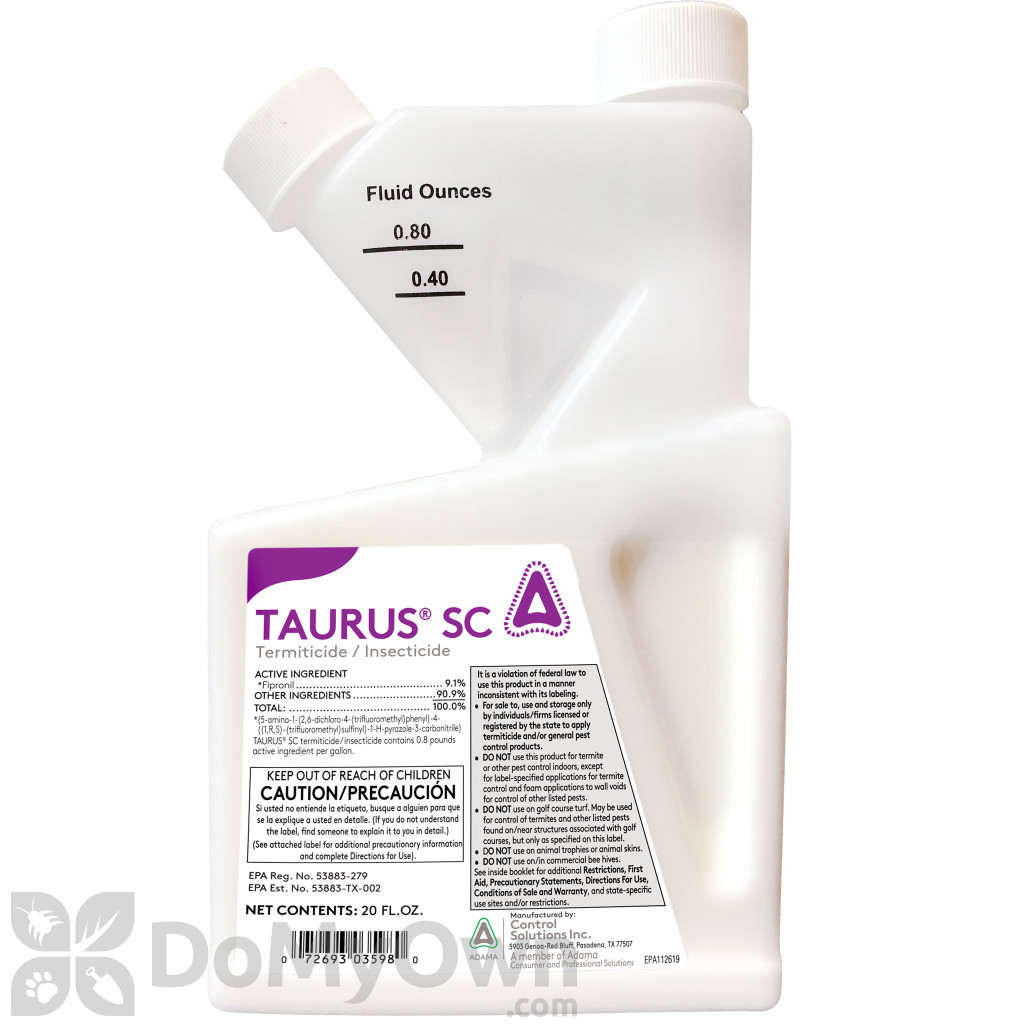 | Taurus SC with 9.1 % Fipronil | It is supposed to be dissolved in the water. Spraying it around will help exterminate an entire ant colony within a week or two. It is very poisonous, for outdoor use only. |
 |
 | Bifen XTS Concentrate | It can kill an entire ant or termite colony. It is very toxic, for outdoor use only. | Check Price |
How to Get Rid of Fire Ant Mound: Do Natural Tricks Really Work?
There is plenty of traditional treatment of fire ants, and perhaps you’ve heard about some of them from your neighbors or read about them online. Certain people recommend pouring boiled water, vinegar, bleach or even urine over the anthill, others claim that the oats sipped onto the mound helped them get rid of the fire ants. Do all these tricks work? Below we’ve tried to find an answer to this question together with the scientists.
Is it real to get rid of fire ant mound using boiling water?
Fire ants’ nests are small and you can simply dig them out. This isn’t an easy job though, and it doesn’t guarantee you anything. The scientists have found that the queen can flee deeper into the ground through the passages that were dug earlier. In this case the mound will be back where it used to be in a couple of weeks. So use liquid nitrogen and boiling water. The former is not easy to buy, though, and the latter may not reach the queen.
Boiling the mound is the only more or less efficient traditional treatment methods (although, there are certain peculiarities to be taken into account). Other traditional tips, such as using vinegar and oats and others are USELESS. The most effect you’ll have is that the colony will flee elsewhere (perhaps it will relocate merely somewhere else at your place) or inside your house in search of a new place to nest in. Even DE is ineffective here! The Arkansas scientists not that there the orange peels cause “some repellent effect” which is still a poor consolation.
Boiled water can be indeed effective, but, as per the Florida University scientists, it is harmful for the environment as the hot water can burn the plants surrounding the mound and the ants can sting if in case they manage to crawl out. It is only recommended to use this method if you cannot for some reason use insecticides (we’ll talk about them later). However, it is still a temporary measure as it won’t help you kill the queen who will create a new nest with the surviving workers.
INTERESTING FACTS: Don’t pour cold water over the mound in an attempt to drown them. They don’t drown. Even when they find themselves in lots of water, they gather, form a sort of a raft and float to the next location.
The scientists claim that fire ants don’t take the cold well. The Florida specialists state that a fortnight at a temperature below 10° F will be enough “for the substantial number of ants to die” as they need moisture and warmth! For that very reason the invasions in the Northern states with harsh climate conditions are far less frequent than in the Southern ones.
Fire Ants Facts: How to Identify Them? Fire Ants Behavior and Peculiarities
There are different types of fire ants which are substantially different from each other. There are the so-called “native fire ants”, and also there exist Solenopsis Invicta who are red imported fire ants (also called RIFA or IFA). Tropical fire ants and southern fire ants (as well as some others) which inhabit the US are considered to be native fire ants. But it is the RIFA which are most dangerous.
What Are Red Imported Fire Ants, What Do They Look Like and Where Are They From?
Red imported fire ants are one of the world’s most dangerous ants. Their bites are extremely painful and can even be lethal for some. They pose the biggest threat to the life and agriculture of the US’ south-western states. This is related to the proximity of the Puerto-Rico and other Latin America countries border, as from these countries the terrible RIFA monsters came to North America and started breeding back in the 1930-40s. This happened (and is happening to this date) because such goods as plants and trees, ornamental plants, the earth, and beehives were transported. As the IPM Program confirms, this is the main channel of RIFA infestation, as they simply are moved and thus they begin multiplying in new areas.
How do you recognize such an ant? It’s a tiny brown-reddish insect, though some males can be black and red or even just black. The body of a fire ant looks like it has two hemispheres separated by a “waist”. An adult’s ant length varies from ⅛ of an inch to ¼ of an inch. ”… You would argue and ask how to tell apart RIFA from other ants, as tons of ant species fit this description. The chart below will help you identify them.
| Criterion | Native Fire Ants | RIFA |
| Color | As a rule, reddish-brown, even | Brown-red, black and red, the abdominal (last) segment is always darker than the rest of the body, it can be even black |
| Workers’ (who are the majority of the colony) body build | The colonies of such species as tropical fire ants have workers with disproportionately large square head | Workers are of different size, but the body parts are always proportionate |
| Behavior when attacked by humans or natural enemies | Aggressively stinging | Extremely aggressive. They go to the top of the mound and begin stinging. |
| Habitat | Are gradually replaced by the RIFA | Are the most spread fire ants species in the USA |
INTERESTING FACT: RIFA are so eager to conquer other territories. Their desire to settle in a foreign land is a hallmark of any fire ants species. Native fire ants, for instance, have become unbearable pests in India after they were accidentally brought there.
10 Facts about Red Imported Fire Ant Behavior and Its Peculiarities:
Now that we have learnt where the RIFA come from and how they are to be recognize, let’s turn to several facts which will help you kill these stinging monsters.
- Their main activities are search of food and then rushing back to the mound. The ants are looking for food and prey within 50-100 ft of their nest. They move around quickly and they always come back to their mound. By the way, it isn’t so large, as the diameter of the nest is usually from 12 to 18 inches, and its height might reach 18 inches. In comparison with the regular anthills, these nests are very hard to notice as they are a lot like icebergs as most of the anthill (up to 36-48 inches) is located deep in the ground. Up to 250 000 insects can inhabit a single colony.
- RIFA queen can go far to create a colony. She can easily kill other insects which would get in her way. It is necessary to kill her in order to eliminate the entire colony, or else all your efforts will be in vain.
- The ants can’t do without humidity. They do become visible, though, after a downpour which would loosen and soak the soil. If there’s drought, they will hide somewhere deep.
- These ants inhabit not only the soil. Lately, some colonies of fire ants have been found in the walls of houses, in the trash, on rotten stumps and even stone-built structures,
- They love to eat “high-calorie food”. They are especially keen on meat, and products rich with fat or sugar. A fire ant colony can consume the roots of useful plants. There are known cases of these insects’ eating live birds and stinging animals like young deer.
- They love heat. Fire ants inhabit mostly warm regions. They don’t hide their nests in shade and they try to settle as closer to a sunny spot as possible. Most often their nests are found in dry fields, and very seldom they are located in forests. These “carnivores” are also attracted by human accommodation since lots of tasty food can be found there. Fire ants may also be drawn by electric systems. These insects are attracted by electromagnetic fields. There are dozens of known cases when they penetrated the switch boxes, counters and traffic lights. This has often led to breakdowns.
- RIFA destroy pest insects. These creatures kill other pests including fleas and cockroaches eggs. This is the only good thing about their existence. Still, sometimes they try too hard to get rid of other bugs, and this harms the environment.
- They can do harm to the seedlings. Fire ants consume plant seeds and roots as well as some useful insects. For example, they actively drive out local ants which could have become an important element of natural soil processing. As for produce, entomologists of the Florida University claim that the soy, eggplants, strawberries, corn and potatoes are most affected by the fire ants. Moreover, they consume tree bark, leaves and fruits – especially citrus ones.
- There are X-ants. It becomes more and more difficult to distinguish them from other types of ants. They mate with other species and mutate, hence the new types and “black fire ants”.
- They have a double weapon. Besides powerful jaws these creatures also have a venomous sting. When attacking, they rip your flesh apart and then inject the venom. Unlike bees, these ants may attack multiple times and survive afterwards.
Read more about fire ant bites in our article: Fire Ant Bites: Hazard and Treatment

